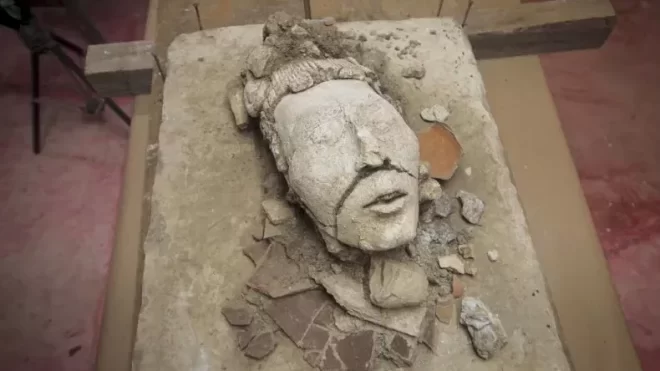A sculpted head of a Mayan maize god was discovered during excavations in Palenque, Mexico, according to a group of archaeologists from the National Institute of Anthropology and History.
The discovery, which was made in July of last year, was made in a section of the archaeological El Palacio complex when a team led by Arnoldo González Cruz noticed a stone alignment that piqued their interest.
The alignment turned out to be a square receptacle, inside of which they discovered the bust’s face, which was three meters long and one meter wide.
Hun Hunahpu, the Mayan God
Hun Hunahpu, the Mayan maize god, was one of the most important gods to the Mayans. The Popol Vuh, a sacred Mayan book, describes how the gods created humans from dough made of yellow and white maize.



Maize was one of the Mayan people’s major foods, and they believed Hun Hunahpu was decapitated every year when harvesting began, only to be revived when the new agricultural season began. The maize crop was able to thrive as a result of this.
Hun Hunahpu was also considered the god of rebirth and the seasons because of this belief, and it was through him that the people understood the cycle of human life.
“The sculpture, which should have been modeled around a limestone base, has graceful features: the chin is sharp, pronounced, and parted; the lips are fine and were projected from the inside out –the lower lip slightly down–and the central incisors are visible. The cheekbones are fine and rounded, whereas the eyes appear elongated and narrow. The forehead is ample, long, and flat, and a rectangular-shaped nose arises, its dorsum nasi is wide and pronounced”.
Archaeologists dated the bust to the Late Classical Period based on the tripod plate on which the head was discovered (700-850 CE)
The head is currently undergoing a drying procedure to allow for its restoration due to the humidity of the location where it was uncovered.
